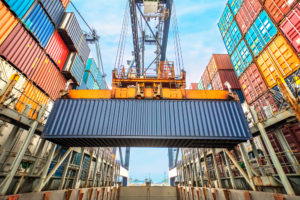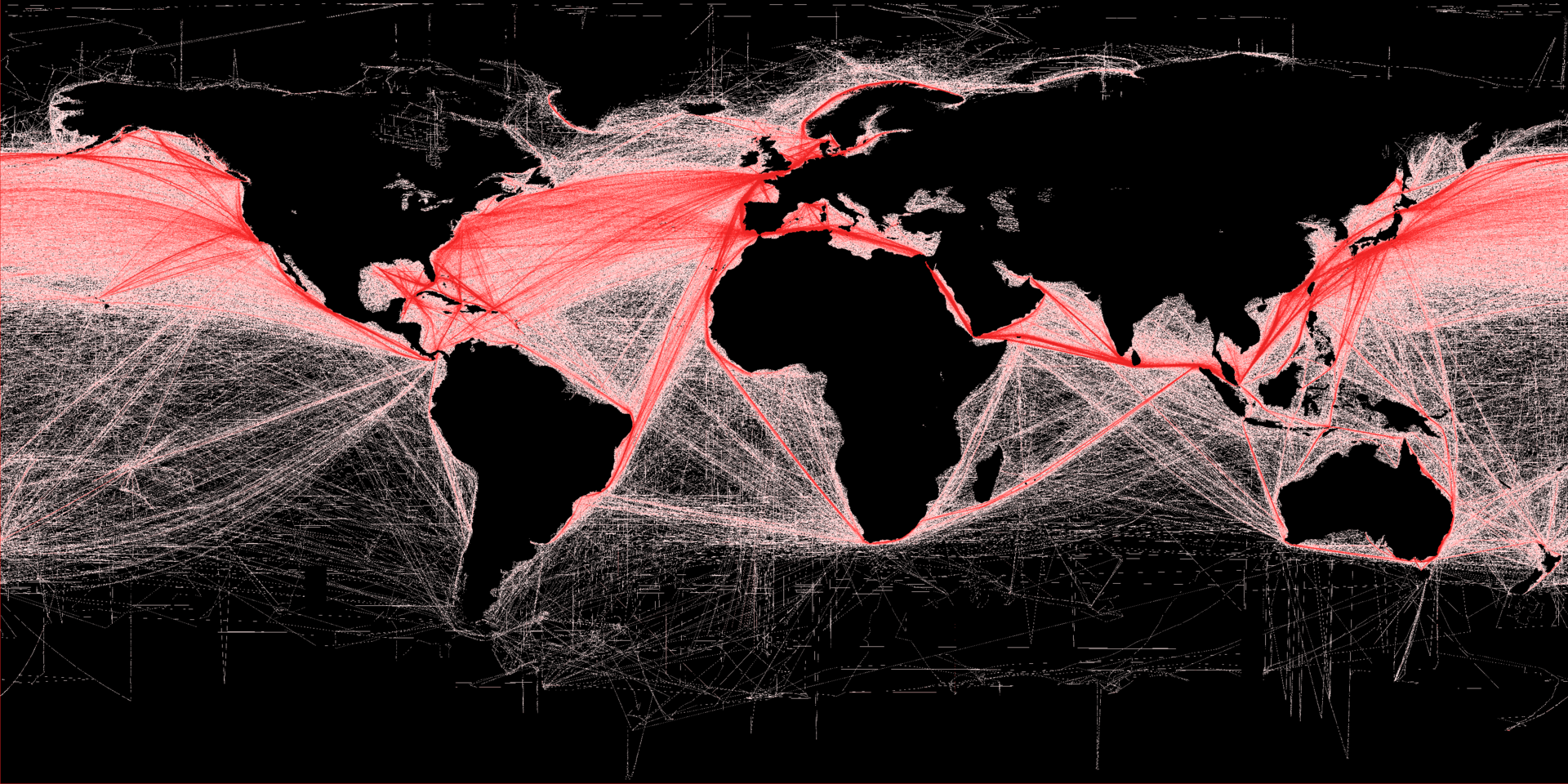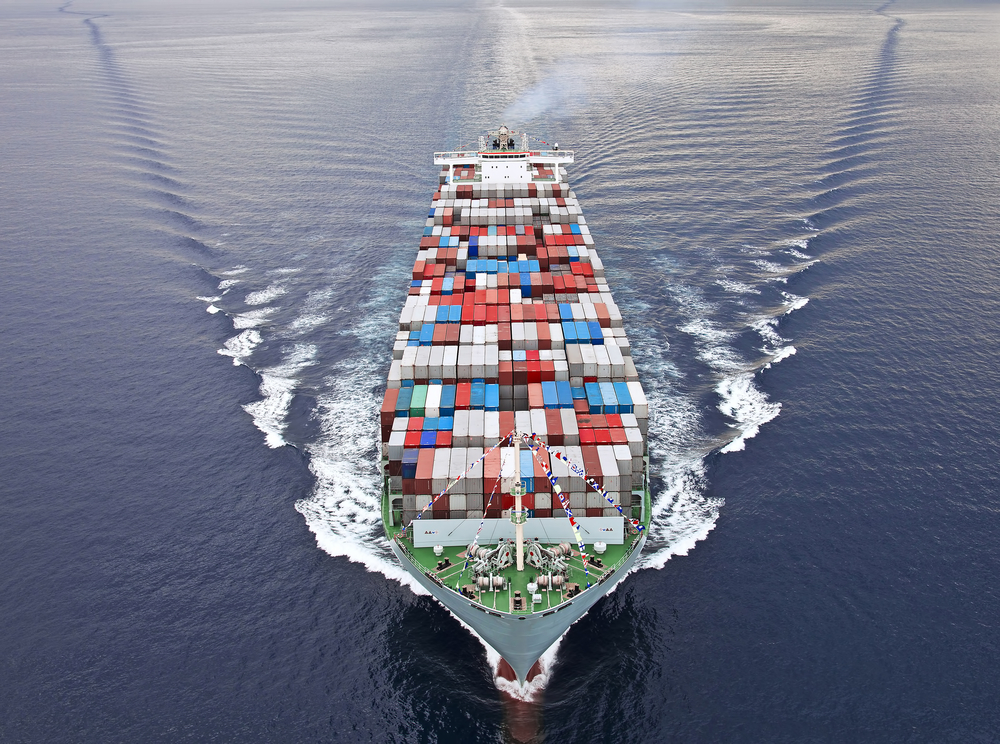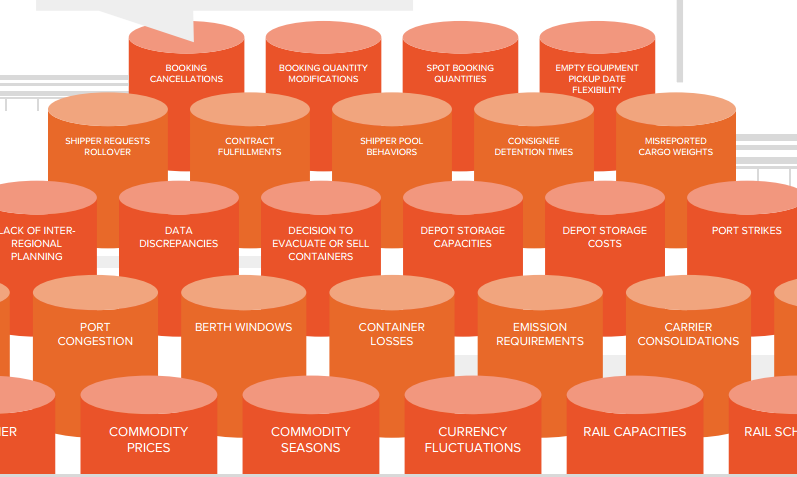

via Shutterstock
The shipping industry is the lifeblood of the world economy, moving 90% of merchandise valued at over $19 trillion in 2014, according to the World Trade Organization. However, the forecasts relied on by many shipping companies leave something to be desired. Now, with big data analytics settling into the wheelhouse, the industry is set to make a sizable leap in efficiency.
It’s easy to forget how quickly the field of big data analytics has arisen, and what steps a given organization must take to be in a position to take advantage of it. For industries like financial services that digitized their process long ago, the move up to using predictive analytics was not a traumatic one. In healthcare, the passage of the American Recovery and Reinvestment Act in 2009 carried the mandate to shift to electronic medical records by 2014, which greased the wheels for the adoption of big data analytics in medicine.
But some industries are far behind the digital curve. The shipping industry, in particular, has lagged behind other businesses in moving beyond paper-based processes and using centralized computers to automated key processes. To be sure, there are big, customized ERP systems in place at many of the biggest shippers. However, many of the smaller ones have only dipped their toes into the digital waters. The challenge is formidable, to be sure, but that makes the pay-off potentially much bigger.
Industry leaders are stepping up to confront the challenges and opportunities that digitization and big data present to shipping. The advent of GPS navigation, real-time weather data feeds, and RFID-equipped smart containers promise to transform the shipping business, optimizing the delivery of goods and the distribution of containers, according to Dieter Berg, the head of business development for Munich Re Global Marine Partnership.
“I’m convinced that the entire field of traffic and port logistics as well as just-in-time shipping will change,” Berg writes in a story on the impact of big data and the Internet of Things (IoT) on his company’s website.
Container Optimization

World shipping traffic (Copyright B.S Halpern/Wikimedia Commons)
Multi-stop trip routing in is a notoriously difficult problem to solve, and it’s no different in the shipping business. There are more than 100,000 ships in the maritime shipping fleet, ferrying merchandise-filled containers and tanks full of bulk cargo to ports thousands of miles across the ocean. In 2012, it was estimated there were 20.5 million standard containers, around the world, accounting for 60% of the world’s seaborne trade.
One company that’s aiming to optimize the flow of containers around the world is the Silicon Valley startup ClearMetal. Founded two years ago by data scientists and engineers from Stanford University and Google, ClearMetal takes a math-based approach to predicting what containers should be where, and when.
“We’re a data science and artificial intelligence company,” says Adam Compain, ClearMetal CEO and co-founder. “We predict all events in the logistics cycle with precision. By doing that, we’re able to provide different parties in the supply chain – whether it’s a shipper, retailers, or freight forwarders or terminals – with actionable insights into how they can better manage their operations.”
Forecast: Not So Excel-lent
Among the various parties in the global supply chain, much of the planning for container placement is done in off-the-shelf forecasting tools, Excel, or worse–between the ears of an experienced manager.

The largest “megaship” can hold 18,000 containers (Alex Kolokythas Photography/Shutterstock)
“Excel and intuition are not that sophisticated in managing the kinds of variability there are in all the elements that go into operations,” Compain says. “It’s simply not really a sharp knife. They’re top-down approaches and static models. They look at overall averages, pump data through a static model, and come out with a forecast.”
Those forecasts give the average shipper less-than-stunning results when it comes to positioning a fleet of 100,000 to a million shipping containers in the optimal position. The shippers need to decide whether to keep a container sitting in a certain location, in hopes that a retailer will fill it up and move it, or to re-position it to a location where it’s more likely to be utilized.
Getting the right mix of containers in space and time is not easy, especially considering the vagaries of global commerce. “There’s massive complexity and uncertainty around how customers are going to behave, how markets are going to move, and how the operations are going to perform.”
Machine Learning to the Rescue
Rather than take an aggregate approach to predicting container demand, ClearMetal uses machine learning and data science techniques to forecast demand at a much more granular level, right down to the individual shipping container.
It all starts, as every data science project does, with the data. ClearMetal feeds its random forest models with data around booking information, vessel voyage information, and container movement data. The company uses these models to power Monte Carlo simulations that try to predict exactly where and when containers will be needed at each leg of their journeys. The models, which run on Amazon’s AWS cloud, provide up to an eight-week window into the future.

ClearMetal data sources
“Our system is actually looking at every piece of the shipping cycle in a way that’s tailored to the shipment industry to come up with much more accurate and dynamic real-time model and forecast of what will happen,” Compain says.
ClearMetal seeks to provide specific answers to specific questions. “As a carrier we’d provide them an application that helps them underrated exactly where they have containers, where they need them, and what their imbalance is,” he continues. “For freight-forwarders, it’s an aggregation helping them understand, of the bookings they get from shipper customers, what will actually dispatch and ship and precisely where. And for a terminal, it might be predictions and applications around exactly when a vessel will arrive and berth, or how containers might flow in and out of their gate.”
In proof of concepts, ClearMetal has demonstrated that it can deliver container demand predictions that are 30% to 60% more accurate than the predictions shippers are currently using. For a large shipping company with hundreds of thousands of containers, that can translate into a savings well into the millions of dollars. All told, the company estimates more than $2 billion could be saved by optimizing the shipping supply chain.
ClearMetal is tackling just one aspect of the massive shipping industry. But as more sensors are installed and companies become more comfortable using the Internet of Things (IoT), there are a number of other applications that are possible to boost the efficiency of logistics operations, especially in the areas of security, safety, just-in-time shipping, and food spoilage.
Related Items:
How GPU-Powered Analytics Improves Mail Delivery for USPS
Exploring New Arenas for Geospatial Data
May 9, 2025
- BigID Introduces Executive Console to Streamline Privacy Reporting and Decision-Making
- Cerebras Partners with IBM to Accelerate Enterprise AI Adoption
- Franz Launches AllegroGraph 8.4 with Enhanced Natural Language Query for Agentic AI
- Peer Software Introduces New Features to PeerGFS for Multi-Protocol AI and Edge Workflows
May 8, 2025
- Amplitude Announces New Strategic Collaboration Agreement with AWS
- Domino Survey Shows Enterprises Prioritizing Governance Over GenAI Hype
- DataRobot Launches New Federal AI Application Suite to Unlock Efficiency and Impact
- Qlik Announces Close of Significant Investment Led by ADIA and Thoma Bravo
- OpenSearch 3.0 Enhances Vector Database Performance, Search Infrastructure and Scalability to Meet AI-driven Demand
May 7, 2025
- SAS Viya Expands AI Portfolio with Copilot, Intelligent Decisioning, and Synthetic Data Tools
- Grafana Labs Demonstrates Open Source Leadership at GrafanaCON 2025
- Neo4j Launches Industry’s 1st Graph Analytics Offering for Any Data Platform
- Cockroach Labs Brings Distributed SQL to IBM LinuxONE and Linux on IBM Z
- SAS Unveils AI Agents with Customizable Human-AI Interaction for Transparent Decisioning
- Coralogix Launches Continuous Profiling for Real-Time Application Visibility with Minimal Overhead
May 6, 2025
- Forrester Unveils Top 10 Emerging Technologies for 2025
- NetApp and Intel Partner to Redefine AI for Enterprises
- Algolia Introduces Smart Groups to Bring AI-Powered Curation and Automation to Content Teams and Merchandisers
- Traject Data Boosts Visibility into Google’s AI Overview with New Enhancements
- Qlik Accelerates Move to Cloud with New Analytics Migration Tool
- PayPal Feeds the DL Beast with Huge Vault of Fraud Data
- The Active Data Architecture Era Is Here, Dresner Says
- Slash Your Cloud Bill with Deloitte’s Three Stages of FinOps
- Thriving in the Second Wave of Big Data Modernization
- Monte Carlo Brings AI Agents Into the Data Observability Fold
- Inside the Chargeback System That Made Harvard’s Storage Sustainable
- AI Today and Tomorrow Series #4: Frontier Apps and Bizops
- Ambari Hadoop Cluster Manager is Back on the Elephant
- Google Cloud Fleshes Out its Databases at Next 2025, with an Eye to AI
- Google Cloud Preps for Agentic AI Era with ‘Ironwood’ TPU, New Models and Software
- More Features…
- Google Cloud Cranks Up the Analytics at Next 2025
- GigaOM Report Highlights Top Performers in Unstructured Data Management for 2025
- SnapLogic Connects the Dots Between Agents, APIs, and Work AI
- Databricks and KPMG Invest in LlamaIndex to Unlock Scalable Enterprise AI
- AI One Emerges from Stealth to “End the Data Lake Era”
- Supabase’s $200M Raise Signals Big Ambitions
- Dataminr Bets Big on Agentic AI for the Future of Real-Time Data Intelligence
- Fivetran Aims to Close Data Movement Loop with Census Acquisition
- Do You Own Your Data? Third-Party Doctrine Says No
- Sigma Secures $200M Round to Advance Its BI and Analytics Solutions
- More News In Brief…
- Gartner Predicts 40% of Generative AI Solutions Will Be Multimodal By 2027
- GitLab Announces the General Availability of GitLab Duo with Amazon Q
- BigDATAwire Unveils 2025 People to Watch
- Dataminr Raises $100M to Accelerate Global Push for Real-Time AI Intelligence
- SAS Unveils AI Agents with Customizable Human-AI Interaction for Transparent Decisioning
- Deloitte Survey Finds AI Use and Tech Investments Top Priorities for Private Companies in 2024
- Databricks Announces Data Intelligence Platform for Communications
- Dremio Named Top Vendor in Dresner 2025 Active Data Architecture Report
- Kroger and NVIDIA to Reinvent the Shopping Experience Through AI-Enabled Applications and Services
- Dataminr Unveils Agentic AI Roadmap to Advance Real-Time Decision-Making
- More This Just In…
Sponsored Partner Content
-
Mainframe data: A powerful source for AI insights
-
CData recognized in the 2024 Gartner ® Magic Quadrant™ Report
-
Introducing AIStor, the most powerful version of MinIO to date
-
Designing a Copilot for Data Transformation
-
Get your Data AI Ready – Celebrate One Year of Deep Dish Data Virtual Series!
-
Supercharge Your Data Lake with Spark 3.3



























